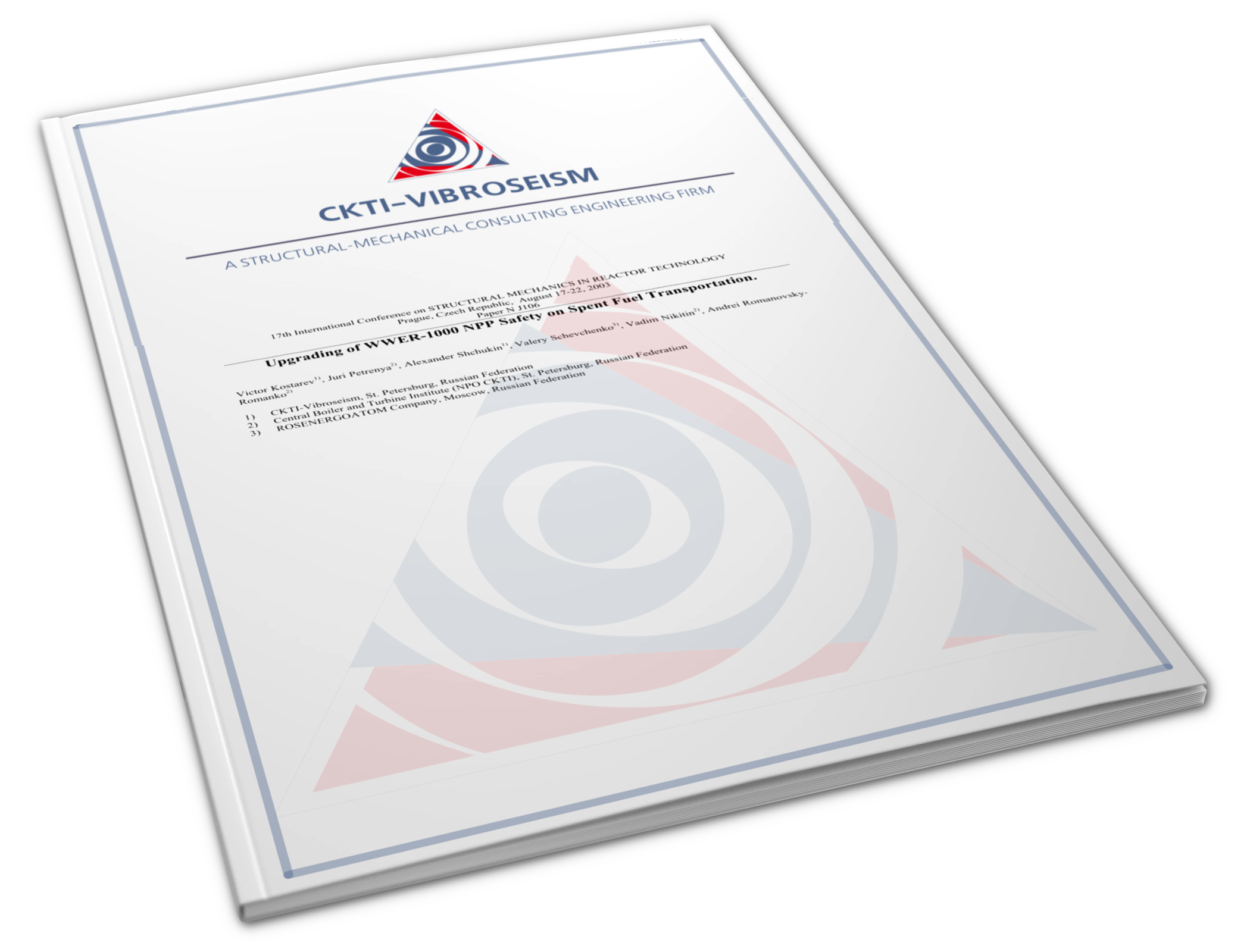Upgrading of WWER-1000 NPP Safety on Spent Fuel Transportation
SMIRT 17,Prague, Czech Republic, August 17-22, 2003, Paper N J106

- Авторы: : Костарев В.В. [Viktor V. Kostarev], Петреня Ю. [Yuri Petrenya], Щукин А.Ю. [Alexander Yu. Shchukin], Шевченко В. [Valery Schevchenko], Никитин В. [Vadim Nikitin], Романовский-Романько А. [Andrei Romanovsky-Romanko]
- Редактор: English
- Страницы: 8
- №: 14
- Библиотека: Conference Papers
- Год: 2003
- Файл: Spent_Fuel_Transportation
Просмотры: 2319
- Transportation process for the WWER-1000 Spent Fuel Assemblies consists of three main steps:
- Lifting of unloaded Cask on the elevation of + 38.05 m;
- Loading of Spent Fuel Assemblies into the Cask;
- Loaded cask lowering to the conveyer located in the transport corridor on the elevation 0.00 m.
The most hazardous situation within described process for the Cask itself and Reactor Building Structures is an accidental drop of the Cask from the height of 38.05 m to the Transport Corridor floor due to failure of traverse or crane’s cable break.
According to International Practice and Standards’ Requirements the Cask shall be designed for the drop from 9 meters height to a rigid plate. However, preliminary analysis have shown that in case of 38 m drop the value of g-loads are several times more than allowable limits. Additionally, strength capacity of the foundation slab of the reactor building is not guaranteed.
Using of special damping device that is capable to bring dynamic loads to allowable limits could mitigate the catastrophic consequences of Cask’s 38.05 meters drop.
The paper presents a basic design of the special damping platform and discusses results of analyses of different modes of Cask drops and efficiency of the proposed solution.
 ООО «ЦКТИ-Вибросейсм»
ООО «ЦКТИ-Вибросейсм» 
